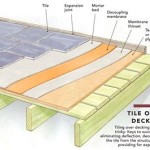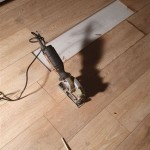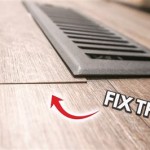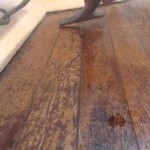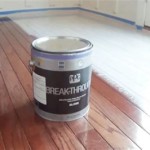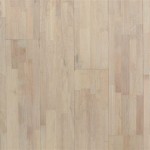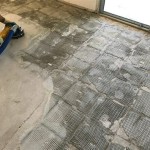How To Install Vinyl Plank Flooring On The Wall
Vinyl plank flooring, traditionally used for floors, has become a popular wall covering due to its durability, water resistance, and wide range of styles. Installing vinyl plank flooring on walls offers a unique aesthetic, whether replicating a shiplap look or creating a textured accent wall. This article provides a comprehensive guide to successfully installing vinyl plank flooring on your walls.
Wall Preparation
Proper wall preparation is crucial for a successful installation. Begin by thoroughly cleaning the wall surface to remove any dust, dirt, or grease. Any imperfections, such as holes or cracks, should be filled and sanded smooth. For walls with existing wallpaper, complete removal is necessary followed by cleaning any remaining adhesive residue. A smooth, clean surface ensures proper adhesion of the vinyl planks.
Next, assess the wall material. Drywall is a common substrate, but other materials may be present. If installing over a glossy surface, lightly sanding can improve adhesion. For significantly uneven walls, consider installing a layer of thin plywood or underlayment to create a more uniform surface. This will prevent the vinyl planks from conforming to the irregularities, leading to a more professional finish.
Choosing the Right Adhesive
Selecting the appropriate adhesive is vital for long-term stability. While some vinyl plank flooring comes with a self-adhesive backing, using a separate construction adhesive is generally recommended for wall applications. This provides a stronger bond and prevents the planks from shifting or peeling over time. Consult the manufacturer's recommendations for compatible adhesives for the specific type of vinyl plank being used.
When applying the adhesive, ensure even coverage across the back of each plank. A notched trowel can be helpful in creating consistent ridges of adhesive, promoting a strong bond without excess squeeze-out. Follow the adhesive manufacturer’s instructions for open time and curing times to ensure proper adhesion.
Installation Techniques
The installation process begins with planning the layout. Consider starting in a less visible corner to allow for any necessary cuts or adjustments to be less noticeable. Dry fitting the first few rows is highly recommended to ensure a straight and level installation. This also allows for accurate measurements and adjustments before applying adhesive.
Begin by applying the first plank firmly against the wall, ensuring proper alignment with the planned layout. Use a level to confirm the plank is straight, both vertically and horizontally. Continue applying planks one at a time, ensuring tight seams between each plank to prevent gaps. A rubber mallet can be used to gently tap the planks together, creating a seamless and professional look.
Cutting and Fitting
Cutting vinyl planks is relatively straightforward. A utility knife with a sharp blade is typically sufficient for most cuts. Score the plank along the desired cut line several times, then bend the plank to snap it along the score. For more intricate cuts, a jigsaw or miter saw can be used. Always measure twice and cut once to ensure accuracy and minimize waste.
Around outlets and other wall fixtures, careful measuring and marking are essential. Use a template or trace the outline of the fixture onto the plank. Cut the necessary openings using the appropriate tools, ensuring a snug fit around the fixture. For complex shapes, multiple cuts may be necessary.
Finishing Touches
Once all planks are installed, inspect the finished wall for any gaps or imperfections. Small gaps can be filled with color-matched caulk. Clean any excess adhesive residue immediately to prevent it from hardening. Allow the adhesive to cure completely according to the manufacturer's instructions before exposing the wall to moisture or significant temperature changes.
While not always necessary, adding trim pieces around the edges of the installation can create a more polished and finished look. These trim pieces can conceal any cut edges of the planks and provide a clean transition to adjacent surfaces. Consider using trim that complements the style and color of the vinyl planks for a cohesive aesthetic.

How To Install Vinyl Plank Flooring On Walls Europine

How To Install Vinyl Plank Flooring Anything

Laminate Flooring Wall Installation

Vinyl Plank Installation Tips For Doorways Halls Walls And Closets

Diy Wood Accent Wall Using Vinyl Planks Love Renovations

Install Vinyl Plank From A Hallway Into Room No Transition Strip

Installing Vinyl Plank Flooring For Beginners Anika S Diy Life

A Beginner S Guide To Installing Vinyl Plank Flooring Dumpsters Com

How To Install Laminate Planks Vertically On A Wall

How To Install Vinyl Plank Flooring Step By Our Aesthetic Abode
See Also
